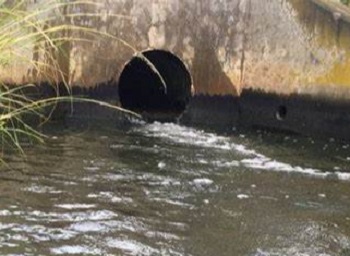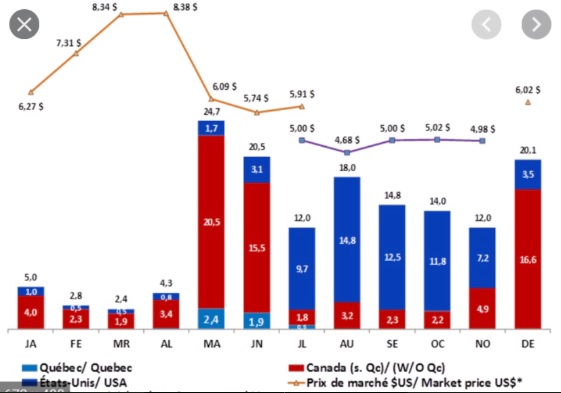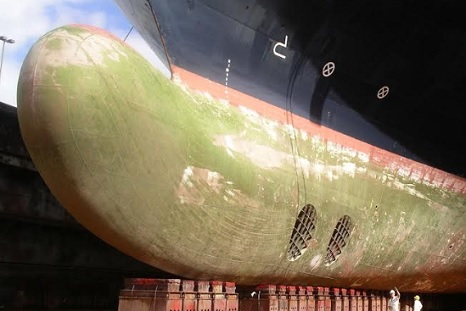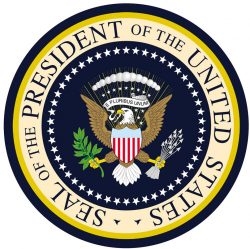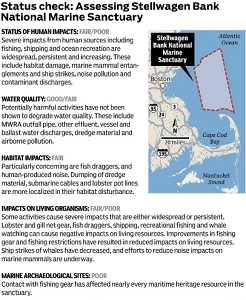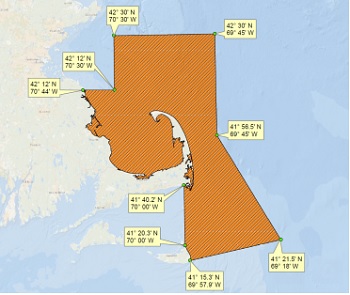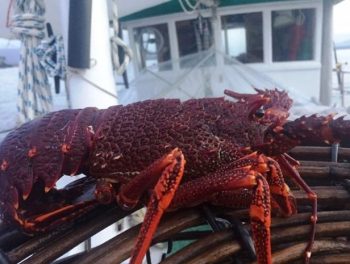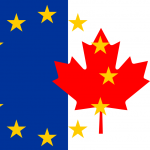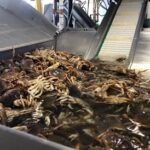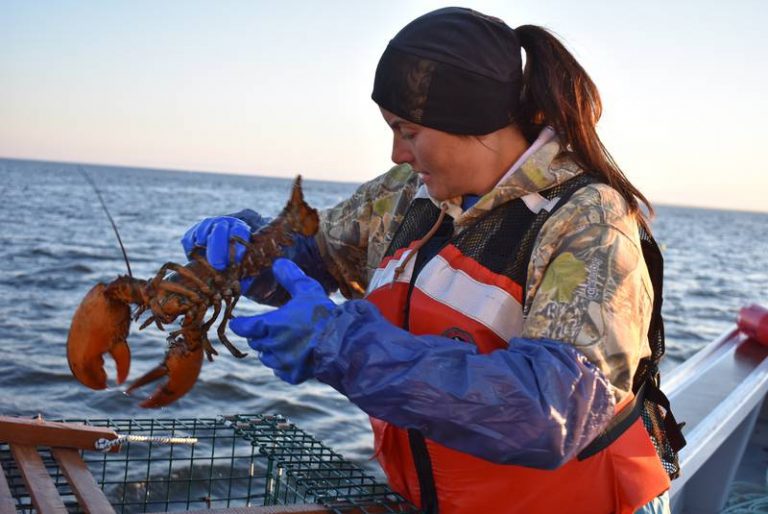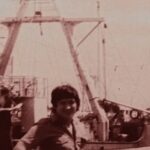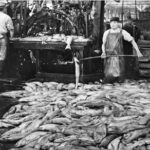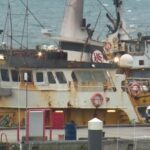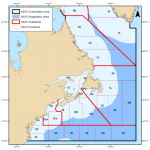Search Results for: plankton
Good Indicators for Capelin Health, Despite DFO’s Doubling Down on Doom and Gloom
 March 15, 2023 – ST. JOHN’S, NL – Following DFO’s technical briefing on the 2J3KL capelin stock today, fish harvesters are optimistic that more favourable environmental conditions could lead to stock growth. However, the tone of the assessment, and how DFO chose to set the Limit Reference Point for capelin, matches DFO’s overall approach of dogma-driven science assessments.
March 15, 2023 – ST. JOHN’S, NL – Following DFO’s technical briefing on the 2J3KL capelin stock today, fish harvesters are optimistic that more favourable environmental conditions could lead to stock growth. However, the tone of the assessment, and how DFO chose to set the Limit Reference Point for capelin, matches DFO’s overall approach of dogma-driven science assessments.
“FFAW-Unifor is not surprised with the tone of today’s technical briefing by DFO Science, which have been consistently negative, irrespective of the data,” says FFAW-Unifor President Greg Pretty. “DFO has admitted that capelin is a bottom-up driven stock, which means that a favourable environment is a key determinant of the stock’s health – not predation or fishing. Yet despite all of these favourable indicators, DFO Science does their absolute best to portray nothing but doom and gloom when it comes to any commercial fishery in our province,” Pretty says.
Increased productivity for zooplankton is a good indicator for capelin health, given that the capelin stock is a bottom-up driven species. This means that with increasing food sources available, DFO Science expects this to lead to increased growth of the capelin stock. When pressed, DFO Science admitted that the increased stock biomass in 2013 and 2014 was likely a result of more zooplankton and warmer waters. They also acknowledged that capelin were larger (fatter) in last year’s survey, another good indicator of the stock’s health.
“DFO Science is supposed to be an unbiased, transparent, and evidence-based in their approach. But most of them don’t spend more than a day on the water each year. They don’t see or appreciate the qualitative observations professional fish harvesters provide, and how we can support more robust and reliable data collection for capelin and other species. Instead of contributing to a productive relationship and more informed stock assessments, we have government scientists whose sole objective is to shut commercial fisheries down, regardless of facts,” says Dennis Chaulk, fish harvester from Bonavista Bay with over 28 years of experience on the water.
DFO Science set the Limit Reference Point (LRP) for capelin with consideration for northern cod, despite not doing so in any other species in Newfoundland and Labrador which are also part of the same ecosystem. This approach was not taken in other prey species like mackerel, northern shrimp and snow crab, and is inconsistent DFO’s Precautionary Approach used in other NL fisheries.
From the perspective of improving the current LRP, “FFAW-Unifor would like to see more priority given to understanding the capelin stock prior to the high levels of the late 1980s. We believe that empirical data, meaning data showing the levels from which stock recoveries have occurred, should be a key consideration in setting Limit Reference Points,” says Dr. Erin Carruthers, FFAW-Unifor Science Director.
Despite repeated requests, DFO has failed to capitalize on new survey opportunities to increase the amount of data contributed to the assessment process. Fish harvesters have repeatedly highlighted the important of off-beach spawning and have questioned whether DFO is tracking the increased importance of deep-water (demersal) spawning. When probed at today’s assessment update, DFO Science agreed that deep-water spawning sites provide recruits to the overall capelin biomass.
Overall, fish harvesters in Newfoundland and Labrador are optimistic about the capelin stock. However, concerns remain regarding the Department of Fisheries and Oceans and their capacity to adequately assess and manage important commercial stocks.
###
Courtney Glode (she/her)
FFAW-Unifor Communications
709-743-4445
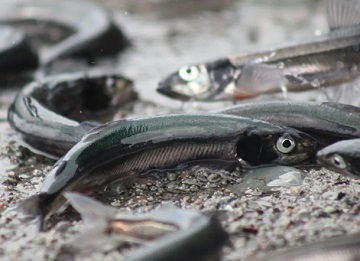
Positive signs in newest capelin stock assessment, but the tiny fish is still in the critical zone
“The capelin were in very good condition in the fall. That meant they’re longer and heavier than average. There’s lots of zooplankton, especially large zooplankton in the ecosystem,” said Hannah Murphy, a DFO research scientist and lead stock assessor. “We also had an increase in our larval abundance index this year, which is great. Larval survival is related to recruitment in capelin, so the more larvae we have and the more that survive, it’s better for the capelin stock.” Murphy said a full capelin acoustic survey happened over 2022, the first since 2019 due to the pandemic in 2020 and vessel availability in 2021. But the positivity ended there. This year, for the first time, the DFO has come up with a limit reference point for capelin. It’s set at 640 kilotons, the weight of fish in the water, and marks the boundary between the cautious and critical zones. >click to read< 17:32
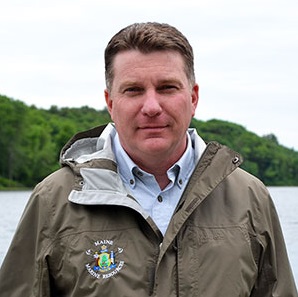
Message from Commissioner Keliher: Federal Budget Package Includes Pause on Whale Regulations and Needed Funding for Research
Finally, some good news for Maine’s lobster industry. Today, the U.S. House of Representatives followed the lead of the U.S. Senate and voted to approve the omnibus spending bill to fund the federal government. This budget package includes a six-year pause on new federal whale regulations, money to gather needed data including the presence of whales and phytoplankton, and funding for the development of innovative gear technology that will keep the fleet fishing. We expect the President to sign this legislation in the coming days. Here are the major provisions: >click to read< 08:29
Message from Commissioner Keliher: Federal Budget Package Includes Pause on Whale Regulations and Needed Funding for Research
 Finally, some good news for Maine’s lobster industry.
Finally, some good news for Maine’s lobster industry.
Today, the U.S. House of Representatives followed the lead of the U.S. Senate and voted to approve the omnibus spending bill to fund the federal government. This budget package includes a six-year pause on new federal whale regulations, money to gather needed data including the presence of whales and phytoplankton, and funding for the development of innovative gear technology that will keep the fleet fishing. We expect the President to sign this legislation in the coming days.
Here are the major provisions:
- Postpones implementation the next phase of federal rulemaking for the lobster fishery under the Atlantic Large Whale Take Reduction Plan (ALWTRP) for six years. New regulations will need to be in place by December 31, 2028. This is a much-needed pause in a process that was setting this industry up for serious economic hardship.
- Provides $2,000,000 for partnerships among State agencies, academia, and industry to address American lobster research in the Gulf of Maine, Georges Bank, and southern New England. The research will explore the impact of whale protection measures on the resource and the fishery.
- Provides $6,000,000 for NARW-related research, monitoring, enforcement, and conservation efforts. A better understanding of NARW abundance and distribution will be critical to the development of future regulations that protect whales without unnecessarily impacting industry. At least half of this funding will be used for vessel surveys, passive acoustic monitoring, habitat and plankton monitoring, habitat modeling, and potentially whale tagging in the Gulf of Maine. This is the type of research and monitoring that we believe will lead to better modeling and more targeted risk reduction measures in the future. Along with aerial surveys, it may also enable dynamic management of closed areas based on whale presence, which would be a better, more targeted solution than large, static seasonal closures.
- Provides $1,500,000 to support continued development of ropeless gear technologies. The research will focus on issues important to industry such as gear location, gear conflict avoidance, and enforcement.
- Provides $26,000,000 through the Atlantic States Marine Fisheries Commission for distribution among affected States. This funding can be used for a range of purposes, including offsetting costs of compliance with the 2021 rule and electronic monitoring requirements, or research to inform future regulatory actions, including development of a dynamic management program or new gear technologies.
- Authorizes and provides $20,000,000 in funding for Fiscal Year 2023 for a new grant program to be administered by the National Fish and Wildlife Foundation. Funding will be available for research and development of new gear technology that will reduce lethal and sub-lethal effects of human activities on right whales, development of dynamic management approaches, and training on how to use newly developed technologies. Eligible recipients include states as well as nonprofits, research institutes and universities who partner with states or fishing industry members and groups.
- Directs NOAA to work with States and other stakeholders to improve the Decision Support Tool (DST), with a goal of reducing the uncertainty that has hampered the effectiveness of the DST in determining risk.
- Encourages NOAA to revise whale population models using “most reasonably certain to occur” rather than “worst case” scenarios and assumptions, and to incorporate better data that allows more accurate predictions of future NARW populations before issuing any new regulations.
Thanks to the extraordinary efforts by Senator Collins, Senator King and Representatives Pingree and Golden, who coordinated closely with Governor Mills to accomplish this legislative action, this package provides the time and resources needed to gather better data and develop workable gear changes before further regulations are implemented.
I need to give special thanks to the staff of our congressional offices who worked tirelessly day and night, well into the wee hours of the morning, for many days, to help make this all happen. I also want to thank MLA’s Patrice McCarron and MLU’s Ginny Olsen who made themselves available, day and night, for us to bounce language off and verify if the MLA and MLU could live with compromises as the playing field changed by the hour and sometimes the minute. MLA and MLU both played critical roles over the last few weeks that helped get this effort over the line.
I would also be remiss if I didn’t thank DMR staff, most notably Deputy Commissioner Meredith Mendelson, who was working with me on this during every waking hour.
This Congressional action also does not mean that this is the end of our work in the courts. We are still actively developing our brief for the appeal in the MLA lawsuit and will keep you apprised on both cases as they progress.
What it does mean is that now we have the time we’ve needed to work on the future of the fishery. This win doesn’t mean we can sit back and wait for things to change – we must actively work on gathering data, challenging the science, improving the models and developing gear that works.
Yes, there is much work to do over the coming months and years– we can’t rest yet. The federal laws will still be used to develop rules that will be implemented in 2028 and beyond, so in the meantime we must ALL WORK TOGETHER and determine the path forward.
I will continue to provide updates as these issues progress, but I’m happy to be able finally to share good news with you as we head into the holidays.
I look forward to seeing you in the new year and in the meantime wish you a healthy and safe 2023!
Merry Christmas!
Pat
Patrick Keliher
Commissioner
Maine Department of Marine Resources
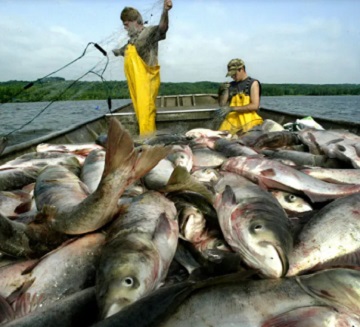
Inland Fisheries: Can Illinois turn Asian carp into Chilean sea bass? State to announce new name
A new name for the much-maligned fish will be announced Wednesday by state officials who hope the rebrand will shed the negative image of a muddy tasting bottom-feeder and inject the truth — they’re top-feeding plankton eaters that taste quite good. The “Big Reveal” will be hosted by the Illinois Department of Natural Resources,,, State officials hope the rebrand will lead to more people eating the fish, which would lead to more commercial fishing operations to pull them from the Illinois River and, ultimately, decrease their numbers and the risk that Asian carp could eventually make their way into the Great Lakes. >click to read< 17:37

Cool ocean waters, abundant nutrients look good for Washington salmon
Scientific markers used to predict the health and productivity of marine species such as juvenile salmon were positive in 2021, the second most favorable since 1998, according to analysis from NOAA. Fisheries biologists are cautiously optimistic that those conditions will persist into the near future, supporting the health of juvenile, ocean-run salmon off the coasts of Washington and Oregon. The report looked at a number of oceanic health markers: atmospheric conditions, water temperature, salinity, oxygen levels, current movement, and biomass of Chinook and Coho salmon, along with food sources such as plankton and small crustaceans. >click to read< 13:55

Has the Precautionary Principle been blown away by wind power?
Clog our near shore and offshore waters with hulking (approaching 1,000 feet tall today, who knows what’s in store for tomorrow?) structures supporting huge rotors with tips moving through the air at velocities approaching 200 miles per hour? So what? Festoon our seabeds with electrical cables carrying huge amounts of electricity, the passage of which will generate electro-magnetic fields that will almost certainly have some effect on some of the species of critters that will be influenced at some level by those fields daily, monthly or annually? Who cares? Influence wave/current/tidal scouring and associated turbidity in undetermined-and very likely undeterminable-ways on the fish, marine mammals, birds, phyto- and zooplankton, and other sea life? What’s the difference? >click to read< By Nils Stolpe-FishnetUSA, more from Nils, >click here< 08:05
Has the Precautionary Principle been blown away by wind power?
Has everyone conveniently forgotten the precautionary principle?
Seemingly all of the self-professed significant actors (both personal and organizational) with self-professed interest and expertise in how potential threats to the oceans and the critters in them should be handled has been synopsized for us rather conveniently-in the Antarctic Ocean Alliance Briefing #2: Applying the Precautionary Principle to Marine Reserves and Marine Protected Areas.*
Borrowing from said briefing, we have:
The foundation of the precautionary principle
The precautionary principle has deep roots finding expression in sayings such as ‘an ounce of prevention is worth a pound of cure’ or ‘better safe than sorry’. As the need to address environmental issues was increasingly recognized in the late 20th century, the precautionary principle became more widely used in national and international legislative contexts.
The precautionary principle was enshrined in International Law through Principle 15 of the Rio Declaration, 1992. The concept is now central to law making on a large range of issues, including climate change, toxic chemicals and genetically modified organisms (GMOs), forests, wildlife protection and oceans.
The use of the precautionary principle in ecosystem management is especially important in the case of the marine environment where scientific uncertainties abound. Repeated failures of management highlighted by the collapse of northern cod off Canada, the California sardine fishery, and herring, sandeels, blue whiting and capelin stocks in the North Sea have demonstrated the need for this approach in order to help address scientific uncertainty.
With the precautionary principle as a foundation many international agreements and bodies have sought to apply a precautionary approach specific to their particular challenges. In its essence the precautionary principle re-quires taking action in the form of protective conservation and management actions to reduce the risk of serious and/or irreversible harm from an activity before negative consequences become apparent. The establishment of MRs and MPAs is thus a precautionary act.
Precaution in regional fisheries management organizations (RFMOs):
Many international institutions and RFMOs have endorsed the use of the precautionary principle and precautionary approach in conserving marine ecosystems and protecting biodiversity.10 For example, the Convention on Biological Diversity (CBD)’s Conference of the Parties (COP) links the precautionary principle to the development of MPAs, noting that the COP “has a key role in supporting the work of the [UN] General Assembly with regard to marine protected areas beyond national jurisdiction, by focusing on provision of scientific and as appropriate, technical information and advice relating to marine biological diversity, the application of the ecosystem approach and the precautionary approach.”11 MRs and MPAs are thus increasingly recognized as an important application of the precautionary principle in the marine environment. Improving traditional fisheries management, data and modelling cannot always ensure the long-term sustainability of marine life.
Scientists note that “MPAs can serve to hedge against inevitable uncertainties, errors and biases in fisheries management. Marine Protected Areas (or as we have called them, simply, protected reserves) may well be the simplest and best approach to implementing the precautionary principle.”
The Antarctic Ocean Alliance is a coalition of more than 30 leading environmental organizations and high-profile individuals working together to achieve large-scale protection for key Antarctic ocean ecosystems.
Alliance members include the Pew Environment Group, Greenpeace, WWF, the Antarctic and Southern Ocean Coalition (ASOC), Whale and Dolphin Conservation (WDC), Humane Society International, Mission Blue (US), International Fund for Animal Welfare (IFAW), Oceans 5 (US), Deep Wave (Germany), The Last Ocean, Green-ovation Hub (China), the Korean Federation for Environmental Movement (KFEM), Forest & Bird (NZ), ECO (NZ) and associate partners the Natural Resources Defense Council (NRDC), Oceana, TerraMar Project, the In-ternational Polar Foundation (UK), Plant a Fish, the International Programme on the State of the Oceans (IPSO), the Ocean Project, Bloom Association (France), OceanCare (Switzerland), Eco-Sys Action, Ocean Planet (Aus-tralia) and Corail Vivant (New Caledonia). AOA Ambassadors include actors Leonardo DiCaprio, Edward Nor-ton, Oceanographer Dr. Sylvia Earle, entrepreneur Sir Richard Branson, Chinese entrepreneur and explorer Wang Jing and Korean actor Yoo Ji-Tae.(https://www.asoc.org/storage/documents/resources/aoa-briefing-2-applying-precautionary-approach.pdf, undated.)
All of the above enumerated anti-fishing activists and their organizations (and then some) have been using their so-called precautionary principle as a reason to oppose just about any fishing industry originated or accepted proposal or management proposal for any action which might actually result in helping fishermen and fishing because the radical environmental “rightness” of any outcome can’t be assured.
Yet, when it comes to protecting huge swaths of ocean-and huge numbers of the critters in them or dependent on them-from a seemingly endless list of actual or potential threats brought about by envisioned unprecedented offshore developments, these same self-styled activists/ocean saviors have all conveniently forgotten that anything vaguely similar to their revered precautionary principle has ever existed or should be applied to anything but fishing.
Clog our near shore and offshore waters with hulking (approaching 1,000 feet tall today, who knows what’s in store for tomorrow?) structures supporting huge rotors with tips moving through the air at velocities approaching 200 miles per hour? So what? Festoon our seabeds with electrical cables carrying huge amounts of electricity, the passage of which will generate electro-magnetic fields that will almost certainly have some effect on some of the species of critters that will be influenced at some level by those fields daily, monthly or annually? Who cares? Influence wave/current/tidal scouring and associated turbidity in undetermined-and very likely undeterminable-ways on the fish, marine mammals, birds, phyto- and zooplankton, and other sea life? What’s the difference?
And what of undersea server farms (see David Myers’ Microsoft hails success of its undersea data center experiment—and says it could have implications on dry land, too in the 9/15/2020 issue of Fortune magazine at https://fortune.com/2020/09/15/microsoft-project-natick-undersea-datacenter-scotland/), tidal generators (see Jake Dean’s The Scots Are Unlocking the Ocean’s Energy Potential posted to Slate’s website last month at https://slate.com/technology/2021/06/orbital-marine-power-scotland-ocean-energy.html), and telecom cables (see Adam Satariano’s People think that data is in the cloud, but it’s not. It’s in the ocean in the 03/10/2018 NY Times at https://www.nytimes.com/interactive/2019/03/10/technology/internet-cables-oceans.html)?
In addition (though it doesn’t generate electro-magnetic fields), we certainly shouldn’t ignore the biological and oceanographic impacts of seafloor mining (see Olive Heffernan’s Seabed mining is coming — bringing mineral riches and fears of epic extinctions in the 7/24/2019 issue of Nature at https://www.nature.com/articles/d41586-019-02242-y ).
All of these (and very probably other) activities come with potentially huge though for the most part unidentified downsides, but it’s very doubtful that the well-entrenched and well-funded activists and organizations that are so anxious to employ the precautionary principle to protect the Antarctic and other oceans from fishing will most probably be “out to lunch” when it comes to those considerations.
If (as?) it becomes apparent that that is the case, the major question is going to be why? With potential negative im-pacts that might easily prove to be worse than even poorly regulated fishing could ever be, energy-, telecom- or mining-developments, are the members of the fishing industry going to be capable of surviving with what’s just around the corner? Back in the 70s the fishing industry worked with other (primarily environmental?) interests to regain control of the fisheries resources of what was to become our Exclusive Economic Zone. Is that possible now?
Of course the answer is yes, but is it likely? It’s definitely not happening with wind power today. Evidently, according to the enviro-orgs that have never failed to invoke the precautionary principle when it comes to reducing restrictions on fishing, wind farm developers are on the side of the angels. The enviro orgs are apparently of the mind that windfarms and other proposed ocean uses-and misuses- are incapable of significantly harming the onshore, inshore or offshore en-vironment.
For an idea of where the anti-fishing activists might be going with this, take a look at A new home for fish: how offshore wind turbines create artificial reefs by Nicole DiPaolo in the National Wildlife Federation blog from 09/26/2019 (https://blog.nwf.org/2019/09/a-new-home-for-fish-how-offshore-wind-turbines-create-artificial-reefs/). This is the argument that got recreational fishing groups firmly behind the Gulf of Mexico oil industry before the Deepwater Horizon catastrophe. Since that catastrophe, perhaps not so much.
But with the antifishing activists the beat is going on. Enric Sala, former Pew (Trusts) Fellow in Marine Conservation who is presently National Geographic’s Explorer in Residence and a dozen or so of his cronies-including ex-NOAA head Jane Lubchenco, who should long be remembered for her controversial use of the dispersant Corexit in the Gulf oil fiasco) published Protecting the global ocean for biodiversity, food and climate (in the March 17 issue of Nature).
In essence Sala and his coauthors argue that one of the solutions for the imminent climate crisis is the coordinated establishment of fully protected (that is, protected from commercial fishing, of course!) marine reserves.
According to a review of the article in the March 17 issue of The Guardian (McVeigh, Karen/Bottom trawling releases as much carbon as air travel, landmark study finds), “the analysis shows that the world must protect a minimum of 30% of the ocean in order to provide multiple benefits. The scientists say their results lend credence to the ambition of protecting at least 30% of the ocean by 2030, which is part of the target adopted by a coalition of 50 countries this year to slow the destruction of the natural world.” According to the authors, bottom trawling releases roughly as much CO2 to the earth’s atmosphere each year as does global aviation. And (coincidently, because it’s right in line with the anti-fishing activists’ unrealistic and unnecessary “dream” of protecting 30% of the world’s oceans from fishermen) this could be reduced by establishing a corresponding network of marine protected (from fishing, not anything else) areas.
So evidently, in the view of a handful of marine scientists, most (we’ve been here before.See my February 2003 FishNet article The Pew Commission – a basis for national ocean policy? at https://www.fishingnj.org/netusa23.htm.) with direct or indirect connections to the Pew Charitable Trusts and all with the media influence that those connections afford them and who are willing to ignore actual and potential activities with massive negative impacts on our inshore and offshore ocean environments, this is one of the top priorities. They are still maintaining their campaign to continue persecuting commercial fishing and commercial fishermen needlessly.* And all of this in spite of their oft professed-though not so much lately-adherence to the precautionary principle and their blatant disregard of other stressors.
Their tunnel vision and short-sightedness seem staggering.
*In a response to Sala et al (above), Jan Geert Hiddink, S. van de Velde, R.A. McConnaughey, E. de Borger, F.G. O’Neill, J. Tiano, M.J. Kaiser, A. Sweetman and M. Sciberras wrote “Sala, et al. suggest that seafloor disturbance by industrial trawlers and dredgers results in 0.58 to 1.47 Pg of aqueous CO 2 emissions annually, owing to increased organic carbon (OC) remineralization in sediments after trawling. We agree that bottom trawling disrupts natural carbon flows in seabed ecosystems due to sediment mixing, resuspension and changes in the bio-logical community and that it is important to estimate the magnitude of this effect. We disagree however that their assessment represents a ‘best estimate’. Firstly, the assumption that OC in undisturbed sediment is inert and is remineralised only after disturbance by trawling is at odds with decades of geochemical research on natural processing of OC in marine sediments 2 . Secondly, the volume of sediment where carbon is mineralised after trawling is greatly overestimated. Thirdly, secondary effects, such as the removal of bioturbating benthic fauna and sedimentary nutrient release, which could lead to the preservation and production of OC in sediments, are ignored. Together these issues result in an upward bias in the estimated CO 2 emissions by one or more orders of magnitude.”
Effective May 14, Seasonal Trap Gear Closure and Speed Restrictions Lifted
May 13, 2021 – Effective Friday, May 14, 2021, the Director of the Division of Marine Fisheries is lifting the seasonal trap gear closure and small vessel speed limit restrictions north and east of Cape Cod (Notice of Declaration). These rules were previously in place through May 15 with the potential to be extended further into May if right whales remained in state waters. This action was taken in response to today’s aerial survey by the Provincetown Center for Coastal Studies. This survey showed that no right whales remained in Massachusetts’ state waters.
Beginning tomorrow, commercial trap fishermen may set their gear in those waters under the jurisdiction of the Commonwealth east and north of Cape Cod up to the New Hampshire border. These waters have been closed to trap gear fishing since February 1. Additionally, mariners operating vessels less than 65’ overall length may run them at speeds greater than 10 knots. Operators of vessels with an overall length of 65’ or greater are reminded the federal 10 knot speed limit remains in effect in Cape Cod Bay Seasonal Management Area through May 15.
Commercial trap fishermen are reminded of the new requirement that all vertical buoy lines must have a breaking strength of 1,700 pounds or less. Fishermen are encouraged to visit our buoy line modification webpage to learn more about how to comply with this new regulation. DMF appreciates the accommodations made by trap fishermen for abiding by the trap gear closure and for re-rigging their gear over the winter to meet the new buoy line breaking strength requirements. These actions are designed to reduce the risk of right whales becoming entangled in trap gear and to prevent serious injury and mortality to right whales should an entanglement occur.
Right whales are a critically endangered species. Their population has been decreasing since 2010 due to continued mortality and low birth rates. These whales seasonally migrate into Massachusetts’ waters and aggregate to feed on zooplankton. In recent years, more than 50% of the known population has been observed in our waters during the late winter and early spring. The state’s seasonal trap gear closures and speed limit restrictions protect these endangered whales from entanglements in trap gear and vessel collisions, which are major sources of mortality for these animals.
Please visit our website: www.mass.gov/marinefisheries
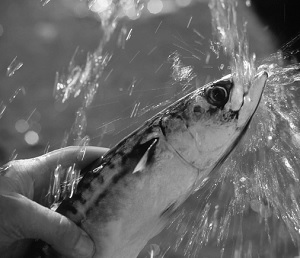
The World’s Supply of Mackerel Is on the Move
The Northeast Atlantic mackerel is a small fish with grey or greenish-blue scales and tigerlike black stripes from mouth to tail. Lacking a swim bladder, the gas-filled organ that helps most fish move up and down in the water, the mackerel would sink and die if it ever stopped. So it is always on the move, looking for plankton, crustaceans, and other small fish. In recent years, the mackerel’s unceasing motion and radically increased abundance have taken it farther north, to Greenland or Svalbard, which lies between Norway and the North Pole, and northwest, to Icelandic waters. And when the fish turned up, the Icelanders took advantage. By tradition, their nation had no claim to this fish, but starting in the mid-2000s, when the lucrative fish arrived in great numbers, they struck. >click to read< 11:09
Opinion: The Reason for No Season – Jim O’Connell
These are 2 females. The black shelled female on the left did not shed this year for the first time skipping the yearly shed. It now has eggs. It was a pound and a half and does not have to shed every year anymore. That gives it the opportunity and time to carry the eggs under its tail for 9 to 12 months while they go through three different color changes before they hatch. The lobster plans for them to hatch in June – July for the abundance of plankton at the surface, where they drift and swim around for weeks, till they settle to the bottom.
The biologists keep a log on how many settlers they count every year and can take an educated guess on how many lobsters there will be 6 years down the road. They call it the settlement rate. Maine’s is looking good. Mass is hurting.
Mass has a hard time sustaining it’s population and one of the reasons may be because they have been depleting the prolific jumbos for decades. Basically selling trophy lobsters.
I talked with a fisherman in Mass who informed me some of the lobster zones have quit taking jumbos and after 7 years are seeing an improvement to their numbers.
Personally I sold Jumbos at my family’s shellfish store as a third generation operator. Back in the 70’s they were cheaper than the small ones by a large margin because they don’t taste as good. That changed as they became scarcer and they became trophy’s. A jumbo has 100,000 eggs. 10 x a small lobster. They can mate as hard shells and don’t shed very often.
Maine’s long standing ban on keeping jumbos appears to be the key to Maine’s success. Over the past 5 years Maine’s catch has increased at a faster pace than Canada’s, 56% to 32%. Canada has a seasonal fishery and they have always caught the jumbos, It may take 7 years to build up Canada’s and the Massachusetts jumbo population to a point that it sustains the population like Maine.
The lobsters in the picture are both females. The one on the right with no black on its claw is a 1¼ pounder that shed this Spring. What you see is mostly the meat that was in a ¾ lb. lobster Slightly soft and Sweet tasting. Some call them new shells. They are still sexually immature. We had bought 2 of the smaller females and not an egg in sight in either of them. The black claw female lobster that is 1 ½ pounds is a lobster you want to protect at least till mid July when the eggs berry out onto the tail making them illegal to catch and possibly notched for further protection during the nine to twelve months it carries the eggs under it’s tail.
In the meantime, there is a good way to increase total landings and be able to fish year round for the whole lobster fishery. Presently in Canada, the DFO has their fishermen making a mad dash in the spring, just before the molt, on these skip molts, black shell females, who are about to extrude their eggs in the following month after the molt in the late spring/early summer time frame. These are the ones that need protection. A ban on the black shell females would best be from April 1 to July 15. Basically no one is fishing Jan to March so there is no reason to penalize the few who dare fish mid winter. Chances are by adopting this easily visible, enforceable regulation you will be notching more berried females to insure further years of protection on the proven breeders.
Back to Thanksgiving. There is a huge problem that has turned into a mob of 200 sworn DFO adherents destroying an Indigenous persons freezer factory and chasing two of the workers into an accessory building threatening to burn it down throwing rocks through the windows. Burnt their truck up. Odds were 200 to 2. They were carrying signs that said a season for a reason in support for the Canadians divisive draconian fishing regulation that forces the lobster men out to fish from Nov to May. All under the illusion that it is the magic pill for sustaining the biggest population of bugs possible. They close the fishery in June just before the molt till Nov. Canceling the nicest weather of the year with tons of hungry shedders. That is when Maine and Mass are out slaying the hungry lobsters.
This is when the First Nation people used to fish. Lobsters go deep in winter. Obviously they were not out on the ocean in the middle of winter. They broke out of the DFO seasonal rules and are fishing during the better weather and higher catch, year round if they want.
The First Nations have publicly come out and said they want to improve the regulations on the present method for sustainability. From where I’m standing if the First Nations would adopt this regulation plus ban Jumbos as Maine has done they would have the most sustainable lobster fishery in the world and would be recognized by the eco conscious buyer, looking for an all natural fresh caught off the boat year round and sustainably managed lobster.
Canada is not protecting the reproductive potential with it’s seasonal rules. They force the lobstermen to throw the baby out with the bath water. Lobstermen who are trying to make a living for the whole year in two months are targeted on the most important lobster for reproduction. The DFO has the lobstermen slaying the black shell females in May and June before the molt then shuts the whole fishery down at great cost to the guys who must remove millions of traps and miss out on possibly millions of pounds of the sweetest hungry shedders filling out their bigger shells and filling out everyone’s pockets who are involved in the lobster industry which will bubble up profits in the communities they live in. whereby bringing new money into their small coastal communities.
This is how an industry decides when to fish. And it just so happens to be after the lobsters have shed mated and spawned. When to fish in Canada was figured by some pencil neck back in 1872 who did not realize how lobsters reproduce. Our landings in Maine have risen 56% compared to A Season for no Reason at 36%. Canada is harming not only their own stock but those would be drifting larvae may end up in Maine too.
Bernadette Jordan could solve this with the stroke of a pen. Pound her with the facts!! Stop this devisive seasonal fishery BS
It looks like the season for a bad reason is a reason to get rid of the season for a reason.
Jim O’Connell
Bar Harbor Maine
[email protected]
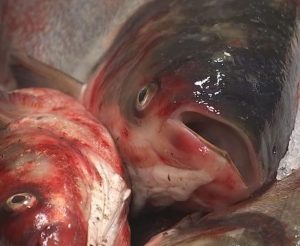
Inland Fish Fight: Invasive Asian carp threaten Kansas and Missouri waterways
Common carp, which resemble overgrown goldfish, were imported from Europe, where they were popular sportfish and table fare over 150 years ago. But bighead and silver carp were first brought from Asia about 50 years ago, Chapman said. Being plankton eaters, the carp were imported with the hope they could clean waters of unwanted materials, including sewage lagoons. It didn’t work out that way. “There’s never been a fish brought in for large-scale aquaculture that hasn’t escaped into the wild,” Chapman said. “Somebody wasn’t paying attention.” >click to read< 10:47
NOAA Fisheries Coronavirus (COVID-19) Update
Nils E. Stolpe/FishNet USA
© 2020 Nils E. Stolpe
August 31, 2020
NOAA Fisheries Coronavirus (COVID-19) Update
Well, first we have this reassuring (at least if you’re not that familiar with the capacity of NOAA Fisheries to get it really, really wrong!) statement that “NOAA Fisheries is actively monitoring and adjusting to the COVID-19 national health crisis” (https://www.fisheries.noaa.gov/national/noaa-fisheries-coronavirus-covid-19-update). Nothing to worry about, right? Well, not quite nothing. While I’ve seen nothing official, word on (at least some of the New Jersey) docks is that, in spite of the ongoing and very possibly worsening national Covid-19 health crisis, the mandatory on-board observers are back in force and demanding rides.
A few FishNet issues back I wrote about NOAA Fisheries (used to be National Marine Fisheries Service. It’s still the same people and the same institutional hang-ups) cancelling research cruises by the NOAA “Navy” which, up until the pandemic crisis, were carrying out surveys that were a supposedly critical part of the agency’s fisheries management mission. Apparently those particular surveys weren’t so critical after all.
To date those cancelled “critical” NOAA surveys are:
NOAA Fisheries will Cancel Five Alaska Research Surveys for 2020
Announcement of survey cancellations in 2020.
NOAA Fisheries Cancels Four Fisheries and Ecosystem Surveys for 2020
The Summer Ecosystem Monitoring, Northern Shrimp, Autumn Bottom-Trawl, and Summer/Fall Plankton surveys have been cancelled for 2020.
NOAA Fisheries Cancels Three West Coast Surveys for 2020
https://www.fisheries.noaa.gov/agency-statement/noaa-fisheries-cancels-three-west-coast-surveys-2020
The Groundfish Bottom Trawl Survey, California Current Hake Research Cruise, and California Current Ecosystem Survey have been cancelled for 2020.
NOAA Fisheries Cancels Remaining Hawaiian Islands Surveys for 2020
The annual Hawaiian monk seal and sea turtle field season deployment, a portion of the main Hawaiian Islands bottomfish survey, and the main Hawaiian Islands corals assessment are cancelled for 2020.
NOAA Fisheries Cancels 2020 Southern California Shelf Rockfish Hook and Line Survey
The Hook and Line (H&L) Survey has been cancelled for 2020.
(Note that while I don’t have any idea if this list represents the sum total of NOAA Fisheries cancelled research surveys or not, I do know that the cancelled cruises represent many millions of taxpayer dollars tied up at the dock – and incurring even more significant maintenance costs while tied up).
In addition, NOAA/NMFS offices are closed to outsiders and meetings/hearings and other official activities have either been cancelled or have been reorganized to be Covid-19 compliant. For examples see the New England Fisheries Management Council’s plans for a hearing on Groundfish Monitoring Amendment 23 (at https://tinyurl.com/y5m9fkub) and the notice of cancellation (excerpted below) of the annual citizen scientist beluga whale census for 2020 at https://tinyurl.com/y497wv4p).
Given the continued uncertainty around travel restrictions and the expected continued need for social distancing, our annual Belugas Count! event, scheduled for September 19, 2020 has been canceled. We hope to see you all in September 2021.
If you decide to venture out along Cook Inlet on your own please follow the current state and local health mandates.
If you happen to observe beluga whales incidental to your adventures please report them to the Cook Inlet Beluga Whale Photo ID Project.
Every sighting counts but above all else please keep your loved ones and community safe.”
It seems like just about anything that might involve NOAA/NMFS employee exposure to Covid-19 has either been cancelled or public participation has been severely restricted or eliminated.
What about cruise ships operations that earned so much media attention this past spring?
Wikipedia lists 54 cruise ships which have had “confirmed positive cases” of Covid 19 reported. (https://en.wikipedia.org/wiki/COVID-19_pandemic_on_cruise_ships).
From the CDC’s role in helping cruise ship travelers during the COVID-19 pandemic (https://tinyurl.com/vpfoamv)
What is the No Sail Order?
In response to the unprecedented COVID-19 pandemic and the increased risk of spread of COVID-19 on cruise ships, CDC published the first industry-wide No Sail Order on March 14 to prevent, among other things, new passengers from boarding cruise ships. CDC extended its No Sail Order, effective April 15, 2020, to continue to suspend all cruise ship operations in waters subject to US jurisdiction. Among other things, cruise lines are required to develop comprehensive plans to prevent, detect, respond to, and contain COVID-19 on their cruise ships to protect the health and safety of both passengers and crew. CDC extended its No Sail Order a second time, effective July 16, 2020. Among other things, passenger operations remain suspended; cruise ship operators must continue to follow CDC’s Interim Guidance for Mitigation of COVID-19 Among Cruise Ship Crew During the Period of the No Sail Order; and cruise ship operators with appropriate No Sail Order response plans must continue to follow the COVID-19 Color Coding System, which requires preventive measures for crew onboard based on the ship’s status.
And the Navy?
Wikipedia lists 22 naval vessels worldwide with reported cases of Covid 19 (https://en.wikipedia.org/wiki/COVID-19_pandemic_on_naval_ships)
Then there’s Captain of aircraft carrier with growing coronavirus outbreak pleads for help from Navy (San Francisco Chronicle/Gafni, M. and J. Garofoli/March 31, 2020 Updated: June 8, 2020 2:07 p.m. https://tinyurl.com/qkqua59):
“The captain of a nuclear aircraft carrier with more than 100 sailors infected with the coronavirus pleaded Monday with U.S. Navy officials for resources to allow isolation of his entire crew and avoid possible deaths in a situation he described as quickly deteriorating.
The unusual plea from Capt. Brett Crozier, a Santa Rosa native, came in a letter obtained exclusively by The Chronicle and confirmed by a senior officer on board the aircraft carrier Theodore Roosevelt, which has been docked in Guam following a COVID-19 outbreak among the crew of more than 4,000 less than a week ago.”
Unfortunately, and in spite of the extreme (and admirable) caution that the people at the top of NOAA/NMFS and others that are charged with the safety of people aboard U.S. military and commercial vessels have demonstrated in protecting their own officers, crews and members of the public from exposure to Covid-19, that level of caution is not applicable to the captains/crew of commercial fishing vessels. They are still in the precarious position of having to take aboard federal observers (either NOAA/NMFS employees or employees of a handful of firms who have contracted with NOAA/NMFS to supply them).
Note – the following discussion depends to a great extent on the fact that we are far from having a full understanding of how Covid-19 is spread from person to person. One of the things that we don’t understand is how long it takes after exposure to Covid-19 virus particles before a person becomes infected. We also don’t know how much exposure to Covid-19 it takes – both time-wise and level-wise – for an infected person to be contagious (or if he or she must be infected or just exposed to be a contagious). Is it ten minutes and a sneeze from 5 feet away? Is it three days of breathing in one another’s face without a surgical mask? Is it two hours at a demonstration, a campaign rally or a concert? How effective are social distancing or masks? Can you catch it by pumping your own gas after someone who is contagious used the pump? By drinking a glass of soda or beer that was poured by a contagious person? By typing your pass code into a public keypad after someone who is contagious used it?
We also don’t know whether (or for how long) Covid-19 viral particles left by someone who is contagious on what kind of surfaces exposed to what conditions can infect someone who contacts those surfaces.
What we do know is that someone can be symptom-free (asymptomatic) and still be contagious. For all we know at this point, someone can be infected by the most casual interaction with someone who is asymptomatic and yet is infectious. Probability –and common sense – argues against that, but is that good enough? Not for me, so for the past five or six months I have been avoiding unnecessary interactions with other folks as much as is humanly possible.
And to add to what we now know but didn’t know last week, and to add to the general lack of knowledge of (or confusion about) what’s going on vis à vis Covid-19 testing:
Breaking – but not really surprising – News:
(CNN at https://www.cnn.com/2020/08/26/health/cdc-guidelines-coronavirus-testing/index.html) The US Centers for Disease Control and Prevention has changed its Covid-19 testing guidelines. The agency no longer recommends testing for most people without symptoms, even if they’ve been in close contact with someone known to have the virus.
Previously, the CDC said viral testing was appropriate for people with recent or suspected exposure, even if they were asymptomatic.
Here’s what the CDC website said previously: “Testing is recommended for all close contacts of persons with SARS-CoV-2 infection. Because of the potential for asymptomatic and pre-symptomatic transmission, it is important that contacts of individuals with SARS-CoV-2 infection be quickly identified and tested.”
The CDC changed the site on Monday. Here’s what it says now: “If you have been in close contact (within 6 feet) of a person with a COVID-19 infection for at least 15 minutes but do not have symptoms, you do not necessarily need a test unless you are a vulnerable individual or your health care provider or State or local public health officials recommend you take one.”
Those who don’t have Covid-19 symptoms and haven’t been in close contact with someone with a known infection do not need a test, the updated guidelines say.
“Not everyone needs to be tested,” the agency’s website says. “If you do get tested, you should self-quarantine/isolate at home pending test results and follow the advice of your health care provider or a public health professional.”
It’s important to note here that according to the CDC “if you have been in close contact (within 6 feet) of a person with a COVID-19 infection for at least 15 minutes but do not have symptoms, you do not necessarily need a test…” However, we do know that a large percentage of Covid-19 carriers are asymptomatic. Perhaps the CDC believes that if you have had close contact (less than 6 feet) with a possible spreader (it seems to me that that could be just about anybody) for more than 15 minutes you should flip a coin, have your tea leaves read, or stand on your head and spin around four times before contacting your own doctor or another bureaucrat for advice and guidance.
When in doubt, lock ‘em in or out?
It’s comforting to know that the Navy and federal agencies are concerned with their employees, officers, crew and paying passengers on commercial and/or military vessels. While no one has made it “official,” it seems pretty obvious that if you spend any amount of time in close proximity to anyone who has been in contact with anyone else (or maybe with a contaminated surface) in the last two weeks that there is a chance that they could be a Covid-19 carrier, whether they are exhibiting any symptoms or not.
But NOAA/NMFS and/or the contracting observer providers want us to believe that have a handle on the whole thing?
Let’s suppose that you are the Captain or a member of the crew of a commercial fishing vessel at the dock and preparing to cast of for a fishing trip, and suppose that a stranger approaches you, presents some identification showing that he or she is a vessel observer working for a NOAA/NMFS contractor and has met all of the “Official” requirements to safely board your vessel and perform all necessary operations with you and your crew for the duration of the trip. We’ll assume that the “requirements” are that he or she is asymptomatic and that she or he has self-quarantined for a specified period. Does “asymptomatic” mean that she or he does not have Covid-19? No. Does having been “self-quarantined” for a specified time mean that he or she does not have Covid-19 or is not contagious? Where was she or he quarantined? Who did he or she come in close contact (for simplicity’s sake we’ll assume closer than 6 feet for longer than 15 minutes, but that’s certainly not carved in stone) with during the quarantine? And what did she or he do when travelling from the quarantine site to your vessel? How many people were contacted? Were they wearing protective gear? Were they more than 6 feet away? On the journey to your boat how many surfaces were touched since the last time they were disinfected?
I’d guess that NOAA/NMFS and/or the contracting company will assure you that allowing the observer on board is safe. That being the case, NOAA/NMFS and/or the contracting company should be willing to accept all Covid-19 related responsibility for their observers. But I’ll bet they won’t. If they don’t, that responsibility in all likelihood will end up on the Captain’s/owner’s shoulders. And that responsibility might well extend through several generations back in port and in the community.
Without indemnification by NOAA/NMFS or the contracting observer companies, the vessel captain/owner could have significant “downstream liability.” Though it is promotional in nature, the following excerpt from a local law firm’s website (The Barns Trail Group, a Tampa, FL law firm at https://tinyurl.com/y57zu9et) lays it out fairly simply. A disclaimer here: there’s not much that’s simple in maritime law.
Civil liability
Under the International Convention for the Safety of Life at Sea (SOLAS), boat owners of seagoing vessels, including inland waterways, are required by law to ensure that all crew and passengers onboard are aware of safety management procedures, drafted under the provisions of the International Safety Management (ISM) code.
SOLAS holds vessel owners liable for civil litigation in the event of personal injury, wrongful death and other claims for financial damages if the captain fails to meet his or her legal responsibility. This covers charter tour boats and privately-held yachts, as well as cruise liners.
Injured parties may certainly have the right to sue for damages against the boat owner under international maritime law, but may also be able to “pierce the corporate veil” and sue the captain and individual crew members for failing to meet their responsibilities under SOLAS, as well.
If it can be demonstrated through evidence that the captain failed to meet the legal responsibility to put passenger safety above his or her own safety, civil damages may be possible for negligence.
A final point
For over two decades fisheries scientists, managers, statisticians and technologists have been working on developing automated systems which would log with acceptable accuracy interactions between marine organisms and fishermen. This would obviate the necessity of on-board observers, who at the best of times come with an almost overwhelming plethora of problems. I think I can say without fear of contradiction that these are far from the best of times. I think the last few thousands of words that I have written in FishNet USA, other writers have written elsewhere, and that a whole bunch of fishermen and other commercial fishing industry members, their friends and their families will attest to, with the current Covid-19 crisis that plethora of problems has made it over the top and is now solidly in the realm of the insurmountable.
On electronic monitoring
Since the beginning of the 21st century, electronic monitoring (EM) has emerged as a cost‐efficient supplement to existing catch monitoring programmes in fisheries. An EM system consists of various activity sensors and cameras positioned on vessels to remotely record fishing activity and catches. The first objective of this review was to describe the state of play of EM in fisheries worldwide and to present the insights gained on this technology based on 100 EM trials and 12 fully implemented programmes. Despite its advantages, and its global use for monitoring, progresses in implementation in some important fishing regions are slow. From the abstract: van Helmond et al. Electronic monitoring in fisheries: Lessons from global experiences and future opportunities. Fish and Fisheries. 2020;21:162–189.(https://onlinelibrary.wiley.com/doi/pdf/10.1111/faf.12425)
See also:
Report on Automated Data Collection Technologies (second Edition), March 2002, The Atlantic Coastal Cooperative Statistics Program (https://tinyurl.com/y2ez46zz).
Ames, Robert T. The efficacy of electronic monitoring systems: a case study on the applicability of video technology for longline fisheries management.2005. International Pacific Halibut Commission. Scientific Report No. 80. https://iphc.int/uploads/pdf/sr/IPHC-2005-SR080.pdf.
So I’ll end with a question. Why is it that, in spite of all of the obvious problems even prior to the Covid-19 crisis, there has been negligible progress implementing electronic monitoring in the majority of our domestic fisheries. For what is spent every year on federal and privately provided observers (the cost of which is increasingly being passed on to the fishermen and therefore to the consumers) why are we still years away from what is a “tech fix” that seems to be readily – if maybe not easily – achievable?
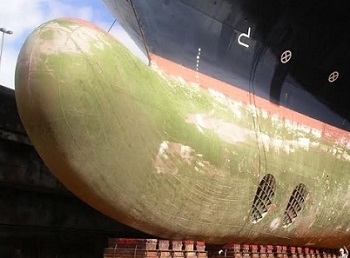
The Judge has ruled! NMFS must list the North Atlantic Right Whale entanglement facts on paper. Case Closed!
Judge Boasberg has ruled! A new accurate ESA analysis has been ordered by next June. The National Marine Fisheries Service just needs to put the lobster entanglement facts on paper and it’s “Case Closed” Not only was there an unusual mortality event in the Gulf of St Lawrence. The Right Whales stopped reproducing. Basically the whales moved up into the South West Gulf of Saint Lawrence in 2015 and took the crab fishermen by surprise and also they set up feeding on copious copepods at the mouth of the St Lawrence River where the Spring flood of nutrients kicks off phytoplankton blooms. Unfortunately this is directly under a shipping lane used solely by cruise ships who traveled at night starting at the end of April.,, by Jim O’Connell, >click to read< 20:26
The Judge has ruled! NMFS must list the North Atlantic Right Whale entanglement facts on paper. Case Closed!
Judge Boasberg has ruled! A new accurate Endangered Species Act analysis has been ordered by next June. The National Marine Fisheries Service just needs to put the lobster entanglement facts on paper and it’s “Case Closed”
Not only was there an unusual mortality event in the Gulf of St Lawrence. The Right Whales stopped reproducing. Basically the whales moved up into the South West Gulf of Saint Lawrence in 2015 and took the crab fishermen by surprise and also they set up feeding on copious copepods at the mouth of the St Lawrence River where the Spring flood of nutrients kicks off phytoplankton blooms.
Unfortunately this is directly under a shipping lane used solely by cruise ships who traveled at night starting at the end of April. Port records and ship tracking apps clearly show they were the only ships operating where 95% of the whales were killed. They were all Holland America Cruise Line Ships out of Boston, and Carnival Cruise Lines.
It has become obvious that we have been barking up the wrong tree based on the few horrible photographs of entangled whales. Please look at these past facts that has had the North Atlantic Right Whale on the road to extinction.
In the order of negatives:
1)Birthrate. 0 in 2018 for the first time.
2)Carnival Cruise. 18+ in last 5 years
3)Canadian Crab. 8 in the past 5 years.
4)Other Ship Strikes. 2-3 per year?
5)Canadian and US Lobstering ¼ whale per year for over twenty years.
6) Maine lobstering 0 for twenty years
This year. Big changes; Canadian Crab entanglements, Cruise ship strikes and birthrate!
1)Birthrate, 10 and on the rise!
2)Carnival Cruise 0, Covid-19
3)Canadian Crab 0, (Effective spot closures)
4)Other Ship Strikes 2, south of Cape Cod
5&6) Lobstering 0, Me, Mass, and Canada.
Some of the reasoning:
1)Birth rate, We don’t know why the birthrate hit 0 but Gulf of Mexico oil spill chemicals were detected as far north as N Carolina, coincidently at the beginning of the decline in birthrate.
2)Cruise Ships, put out of business by Covid-19
3)Canadian Crab, Under excellent whale watch surveillance and using spot closures where whales are locating. Which has basically been in the same location, the SW corner of the GSL, since 2015 when the whales relocated up to the mouth of the St Lawrence from the Bay of Fundy.
4)Other Ship Strikes, Less now than 10 years ago since new ship speed reduction zones were put in place in the US.
5&6)Canadian and US lobstering were never a threat to the species.
Always within an acceptable accidental take.
This year the North Atlantic Right Whales are once again multiplying.
Allowing Cruise Ships to sail through the Gulf St. Lawrence feeding area will be the biggest future anthropogenic cause for concern.
Case closed! The North Atlantic Right Whale population increased this year by 7-8. They could increase by 20 next year. They had as many as 39 births just ten years ago in 2009.
Further reading
https://fisherynation.com/
Department of Marine Resources: Commissioner Pat Keliher Discusses Top Marine Resources Issues
Please listen to this 5 min of audio.
Confirmation of the data from the radio talk show MPBN Maine Calling Jan 8 2020
Jim O’Connell
Independent Investigative Research
Bar Harbor Maine

Coronavirus Uncertainties: NOAA Cancels Four Fisheries and Ecosystem Surveys for 2020
Due to the uncertainties created by the COVID-19 pandemic and the unique challenges those are creating for NOAA Fisheries, we are cancelling four research surveys off the East and Gulf Coast of the United States. The cancelled surveys include: Autumn Bottom Trawl Survey (NEFSC), Summer Ecosystem Monitoring Survey (NEFSC), Northern Shrimp Survey (NEFSC), Summer and Fall Plankton Survey (SEFSC). These are difficult decisions for the agency as we strive to balance our need to maintain core mission responsibilities with the realities and impacts of the current health crisis. >click to read< 18:33
NOAA/NMFS Cancels Four Fisheries and Ecosystem Surveys for 2020
Summer Ecosystem Monitoring, Northern Shrimp, Autumn Bottom-Trawl, and Summer/Fall Plankton surveys cancelled for 2020
|
Due to the uncertainties created by the COVID-19 pandemic and the unique challenges those are creating for NOAA Fisheries, we are cancelling four research surveys off the East and Gulf Coast of the United States. The cancelled surveys include:
These are difficult decisions for the agency as we strive to balance our need to maintain core mission responsibilities with the realities and impacts of the current health crisis. Since March, we have been rigorously analyzing various options for conducting surveys this year and are taking a survey-by-survey, risk-based approach. After much deliberation, we determined that we will not be able to move forward with these surveys while effectively minimizing risk and meeting core survey objectives. The Cancelled SurveysThe Summer Ecosystem Monitoring Survey run out of the NOAA’s Northeast Fisheries Science Center captures seasonal changes in the ocean environment, information used for multiple scientific inquiries. Over its 33-year history, some seasons have been missed and the number of annual surveys has varied, and methods have been developed to bridge these data gaps. The Northern Shrimp Survey is conducted aboard the R/V Gloria Michelle, a 72-foot ship maintained by the Northeast Fisheries Science Center. A major use of survey data is setting shrimp fishery quotas. The shrimp fishery is closed through 2021. The Autumn Bottom Trawl Survey, also run out of the Northeast Fisheries Science Center, has been conducted since 1963. It provides crucial resource and ecosystem data, especially for fishery stock assessments. A future bottom longline survey and new work on industry-based sources of data may help mitigate data gaps. The Summer/Fall Plankton Survey, run out of NOAA’s Southeast Fisheries Science Center covers the entire continental shelf in the Gulf of Mexico region from Brownsville, Texas, to Key West, Florida. It is the only fishery independent survey available to measure the spawning capacity of the adult population of Gulf of Mexico King Mackerel and an important supplemental survey for red snapper and several other reef fish. Next StepsThese cancellations follow similar difficult cancellation decisions of the ship-based work we had planned from April to July. NOAA Fisheries is continuing to assess the status of other surveys in all our regions. We are working through numerous survey scenarios relative to community pandemic safeguards and safe work practices so that we maximize the science available for fisheries management in this challenging year. |
Questions?Media: Contact Teri Frady, Research Communications |
Proclamation on Modifying The Northeast Canyons And Seamounts Marine National Monument
June 5, 2020 – In Proclamation 9496 of September 15, 2016, and exercising his authority under section 320301 of title 54, United States Code (the “Antiquities Act”), the President established the Northeast Canyons and Seamounts Marine National Monument, reserving for the care and management of objects of historic and scientific interest approximately 4,913 square miles of water and submerged lands in and around certain deep-sea canyons and seamounts situated upon lands and interests in lands owned or controlled by the Federal Government. The President prohibited commercial fishing, with a phase-out period for American lobster and red crab fisheries, within the monument’s boundaries. This proclamation lifts the prohibition on commercial fishing, an activity that is subject to the Magnuson‑Stevens Fishery Conservation and Management Act (Magnuson‑Stevens), 16 U.S.C. 1801 et seq., and other applicable laws, regulations, and requirements. This proclamation does not modify the monument in any other respect.
Proclamation 9496 identifies a number of canyons and seamounts as objects of historic and scientific interest. The monument is designated in two units, which correspond to two distinct geological features. The Canyons Unit comprises three underwater canyons that start at the edge of the continental shelf, whereas the Seamounts Unit consists of four undersea mountains. Both units are located in the United States Exclusive Economic Zone. In addition to the geological features, Proclamation 9496 designates the natural resources and ecosystems in and around the Canyons and Seamounts Units as objects of historic and scientific interest. Proclamation 9496 describes diverse ecological communities in the canyon and seamount areas, which include seabirds, whales, dolphins, turtles, and highly migratory fish species, such as tunas, billfish, and sharks. Proclamation 9496 observes that some of these species have appeared in the canyon and seamount areas in large aggregations and increased numbers. In support of the monument designation, Proclamation 9496 notes that “[t]hese canyons and seamounts, and the ecosystem they compose, have long been of intense scientific interest,” with “[s]cientists from government and academic oceanographic institutions” studying “the canyons and seamounts using research vessels, submarines, and remotely operated underwater vehicles for important deep-sea expeditions.”
As part of the management of the monument, Proclamation 9496 prohibited, subject to the phase-out period previously noted, all commercial fishing within the monument’s boundaries. As explained herein, following further consideration of the nature of the objects identified in Proclamation 9496 and the protection of those objects already provided by relevant law, I find that appropriately managed commercial fishing would not put the objects of scientific and historic interest that the monument protects at risk. Indeed, Proclamation 9496 allows for recreational fishing and further acknowledges that “[t]hroughout New England, the maritime trades, and especially fishing, have supported a vibrant way of life, with deep cultural roots and a strong connection to the health of the ocean and the bounty it provides.”
With respect to fish in particular, many of the fish species that Proclamation 9496 identifies are highly migratory and not unique to the monument. Some of the examples of fish species that Proclamation 9496 identifies are not of such significant scientific interest that they merit additional protection beyond that already provided by other law. Moreover, the fish species described in Proclamation 9496 are subject to Federal protections under existing laws and agency management designations. For example, Magnuson-Stevens regulates commercial fishing to ensure long-term biological and economic sustainability for our Nation’s marine fisheries, taking into account the protection of associated marine ecosystems. Magnuson-Stevens establishes regional fishery management councils, supervised by the Secretary of Commerce in coordination with the States and affected stakeholders, that develop fishery management plans to regulate our Nation’s fisheries, using the best available science and observing strict conservation and management requirements. Magnuson-Stevens requires a similar process of science-based fisheries management for highly migratory species, including the tunas referenced in Proclamation 9496. In addition, Magnuson-Stevens provides that fishery management plans may include, among other measures, management measures to conserve target and non-target species and habitats, including measures to protect deep-sea corals.
A host of other laws enacted after the Antiquities Act provide specific protection for other plant and animal resources (including coral species) both within and outside the monument. These laws include the Endangered Species Act, 16 U.S.C. 1531et seq., the Migratory Bird Treaty Act, 16 U.S.C. 703-712, the National Wildlife Refuge System Administration Act, 16 U.S.C. 668dd-668ee, the Refuge Recreation Act, 16 U.S.C. 460k et seq., the Marine Mammal Protection Act, 16 U.S.C. 1361 et seq., the Clean Water Act, 33 U.S.C. 1251 et seq., the Oil Pollution Act, 33 U.S.C. 2701 et seq., the National Marine Sanctuaries Act, 16 U.S.C. 1431 et seq., and Title I of the Marine Protection, Research and Sanctuaries Act (Ocean Dumping Act), 33 U.S.C. 1401 et seq. For example, the Endangered Species Act generally prohibits the taking of fish and wildlife species listed as endangered, and also generally ensures that Federal actions, including fisheries management, are not likely to jeopardize the existence of any such species. The Marine Mammal Protection Act provides protections for marine mammals, and prohibits their take, subject to some exceptions. Numerous other statutes, including the Clean Water Act, Oil Pollution Act, and Ocean Dumping Act, address both land-based and ocean-based sources of pollution and help ensure that water quality continues to support plankton and other pelagic organisms.
After further consideration of the nature of the objects identified in Proclamation 9496 and the protection of those objects already provided by Magnuson-Stevens and other relevant law, I find that a prohibition on commercial fishing is not, at this time, necessary for the proper care and management of the Northeast Canyons and Seamounts Marine National Monument, or the objects of historic or scientific interest therein.
WHEREAS, Proclamation 9496 of September 15, 2016, designated the Northeast Canyons and Seamounts Marine National Monument in the Atlantic Ocean and reserved approximately 4,913 square miles in the United States Exclusive Economic Zone for the care and management of objects of historic and scientific interest identified therein;
WHEREAS, I find that removing the restrictions on commercial fishing set forth in Proclamation 9496 to allow for well-regulated commercial fishing use is in the public interest and that the objects in the monument can be, and are currently, protected pursuant to carefully tailored regulation and management under existing Federal law:
NOW, THEREFORE, I, DONALD J. TRUMP, President of the United States of America, by the authority vested in me by the Constitution and the laws of the United States, including section 320301 of title 54, United States Code, hereby proclaim that Proclamation 9496, which established the Northeast Canyons and Seamounts Marine National Monument, is amended as follows:
(1) in the section entitled “Prohibited Activities,” by deleting paragraph 6; and
(2) in the section entitled “Regulated Activities,” by deleting paragraph 5 and by re-designating paragraphs 6 and 7 as paragraphs 5 and 6, respectively.
Furthermore, nothing in paragraph 4 in the section entitled “Prohibited Activities” in Proclamation 9496 shall be deemed to apply to commercial fishing that is carried out in accordance with Magnuson-Stevens and other applicable laws, regulations, and requirements.
Nothing in this proclamation shall be construed to revoke, modify, or affect any withdrawal, reservation, or appropriation, other than the one created by Proclamation 9496.
Nothing in this proclamation shall change the management of the areas designated and reserved by Proclamation 9496, except as explicitly provided in this proclamation.
If any provision of this proclamation, including its application to a particular parcel of land, is held to be invalid, the remainder of this proclamation and its application to other parcels of land shall not be affected thereby.
IN WITNESS WHEREOF, I have hereunto set my hand this
fifth day of June, in the year of our Lord two thousand twenty, and of the Independence of the United States of America the two hundred and forty-fourth.
DONALD J. TRUMP

Cod Cannibalism: With natural prey like capelin and shrimp in decline, cod are eating their young
Stalled. That’s how research scientist Karen Dwyer of the Department of Fisheries and Oceans describes the northern cod stock following this year’s assessment. Ecosystem conditions appear to be the main factor, said Dwyer — especially low stocks of capelin and shrimp. “Both of those prey are very important in driving the population dynamics for cod,” she said. While there’s been an increase in different types of zooplankton, Dwyer said, there’s been a decrease in fatty zooplankton. “There used to be large numbers of large fatty zooplankton, full of fat, which are really good for young fish to eat, young fish such as capelin or even young cod,” she said. “Over time they’ve seen a decline in these large fatty zooplankton.” >click to read< 07:18
“To Kill a Lobsterman”: How to kill a species with Fake News from Nat Geo of all places!

“Fishing without vertical lines is what is going to save this
species.“ says CT Harry of the IFAW who work hand in hand
with NOAA.
A ridiculous statement in view of the 18 cruise ship strikes in
the GSL in the past few years. Read the text, top right, Those
are 6 cruise ship strikes in the Gulf of St Lawrence that are
deceptively used as entanglement advertising. Not all whales
were necropsied and at the end of 2019. There were 10
reported deaths. 3 were entanglements. So whose doing the
math. This is a Ropeless gear advertisement and Pew Trust
is in over their heads as a nonprofit constantly slandering the
lobster industry. They are ruining our pristine product while
feeding the public a red herring. Cruise Ships win. CLIA
wins. The Whales go extinct and the lobster industry goes out
of business. It’s $2000 bucks for each trap and 2000 for the
sending unit. A guy with 800 traps has to cough up $
1,602,000.00. That is what Pew’s one red herring will catch
with their hopeless ropeless clap trap. Pew has no problem
saying the word lobstermen, but when it comes to saying
Cruise Ships, Ha !! They are more than likely receiving
millions in donations . It’s hard to get someone to understand
something if their funding depends on them not understanding
it.
Most likely Carnival Cruise Lines is responsible for 18+ Right Whale deaths in the past 3 year, at which rate they would soon be extinct. >click to read<
2/25/2020
By Jim O’Connell
“Fishing without vertical lines is going to save the species” “A recent study attributes nearly 60% of diagnosed North Atlantic Right Whale (NARW) deaths over a 15 year period to entanglement” The second statement 60% is pathetic! It may be 80% ships 20% entanglements over a 15-year period.
This blame game is out of hand when in fact the NARW which are not reproducing have in the last 5 years have found copious copepods in the South West Gulf of Saint Lawrence (GSL) underneath a dedicated cruise ship corridor which feeds fecal matter nutrients to the little crustaceans, nutrient rich black water discharged at a constant rate of nearly 50 gallons a minute while 12 miles offshore. Copepods eat fecal matter. It’s their favorite food. Whales eat copepods it’s their favorite food. Cruise ships run down Right Whales at night when they are likely sleeping near the surface as they must breath air. apparently Carnival Corp favors killing whales than spending 15,000 extra bucks to reroute around that isolated area where there is a good plankton bloom year to year. The reason I hold them responsible is they took out 3 in 2015 up to 10 whales in 2017 and yet they still sailed through that same area in 2019 and took out 6 or 7 more.
If this International Fund for Animal Welfare (IFAW) thinks 1|4 whale per year from lobster fishing over 22 years is wiping out the species then they will be culpable in misdirecting the effort to stop the cruise ship industry from taking out 6 whales per year in the GSL. It looks to me like IFAW could care less about saving a species and more about selling a totally unnecessary and impractical ropeless lobster trap. Ignorance is bliss. If they succeed in diverting attention from the real problem they should be sued for causing the avoidable deaths in the SW Gulf of St Lawrence.
7 dead ship strikes were found in the wake of the Zaandam between May first and the end of July last year. The Zaandam begins to once again on 4/29 “accept the guilt for the necessary murder of the Right whale to sell tee shirts on PEI.
Connect the dots. CLIA, Cruise Lines International Associates, Disney Cruise Line, Disney Corporation owns Disney Cruise lines and National Geographic. Disney Cruise is probably well connected under the CLIA umbrella where all cruise lines collaborate.
In October 2019 after it looks like Carnival has killed up to 7 or 8 more whales National Geographic launches 2 page well done shock art of a whales entanglement dance of death, with a trawl of lobster traps, done in collaboration with the IFAW International Fund for Animal Welfare artists. They should be drawing a new cruise ship route around the feeding area in the Gulf of St Lawrence, before May 1st. Pew trust, totally misdirected, is funding rope less lobster traps, that are impractical and will only save ¼ whale per year killed by the lobster industry, Pew Charitable Trust’s partners , CLF Conservation Law Foundation and Earth Justice filed suit 2/8/2018 against NOAA to take action against the fishing industry meanwhile one Cruise ship takes out 7 more whales in the Gulf of St Lawrence the following year, 2019. CLIA then launches new 2 page ad pictured below in latest 2/20 Geographic showing a Holland American Carnival Corporation ship whale watching in Alaska, The very cruise line who is most likely responsible for 18 Right Whale deaths in the past 5 years in the Gulf of St Lawrence.
The outright hypocrisy is criminal. It’s a total denial for what they are getting away with under the wandering eye of economic Canadian “priorities”. CLIA, the dirtiest most non-transparent tourist industry in the world fights back with it’s most powerful tool, its advertising campaigne. The Pew Charitable Trust kills off the whole Right Whale species throwing a red herring at the public by blaming the lobstermen while Canada under the illusion of millions pouring into PEI: Ay it’s just another dead squirrel beside the road. The Zaandam makes 13 passes through there starting April 1st 2020. A little bump in the night and a 50 ton animal is dead. Enjoy your cruise.
There have been no Maine Lobster Industry caused Right Whale deaths since 2002 according to this NOAA Document. 5 in all of New England since 2000. That is ¼ whale per year. Well within the tolerable zone.
Why isn’t NOAA sharing this data in support of the lobster industry?!!
In reaction to a birthrate plummeting to 0, and a few shocking photos of trussed up whales Earthjustice sued NOAA to tighten the reigns on the lobster industry. All you had to do is follow the numbers north and the answer becomes obvious. 18 possible Carnival cruise ship strikes by several of it’s ships over a 3 year period. It looks to me like someone has to call for an emergency Cruise Ship Course change before 4/29/20.
When they took out 7 last year. The lobsterman took ¼. That is a 28 to 1 vote to get rid of cruise ships.
It looks like Earthjustice is the harm we can avoid and we shouldn’t tolerate that chain of thinking. Emotional money dictating science. Back off!
You are defaming the lobster industry. Thousands of tightly bound community members, whom are the true stewards of their sea.
Recent record catches proves they are the best conservation minded people around. They are not responsible in this. Their effect is tolerable. Yet now they have been given a black eye. The blame looks like it is on Carnival Corporation for its negligence. And Boston for allowing such poisonous air pollution industry that makes it’s money trampling mother nature to berth right down town violating its 5 minute idling code around the clock to the tune of 10,000 idling semi trucks emitting one gallon of 15 ppm diesel per hour.
I bet there is more asthma attacks there as it only takes .02 ppm to kick off an attack. I read the fine is $500. for repeaters. So if the Zaandam is berthed at the Black Raven idling away it is burning at least 100 gallons or more of, at the minimum 600ppm per hour to power it’s huge hotel. 600 has 40 times the sulfur as the 15ppm semi truck. So if your getting fined each time you idle 15ppm for 5 minutes @$500. Then the Zaandam should be paying 240 Million dollars for 10 hours . That marine diesel they burn is classified as a Group1 carcinogen. Not what you should burning right in town.
So, do you want to crush the only thriving conservation minded fishery out there, worth well over $100 Million, and watch mother nature get trampled into extinction to make a buck? Of course not! Kick the cruise ships out of this country.
By Jim O’Connell
Reminder: Large Whale Seasonal Trap Gear Closure in Effect on February 1st
January 23, 2020
This advisory serves to remind recreational and commercial trap fishermen that the Large Whale Seasonal Trap Gear Closure (Closure) is in effect from February 1 through April 30. The Closure may be extended into May if right whales remain aggregated in the area. The Closure area encompasses the waters of Cape Cod Bay, Stellwagen Bank and eastern Cape Cod (see map). State officials will be patrolling this area in advance of and during the closure to identify gear and notify its owners
During this restricted period all trap gear closure must be removed from the Closure area. If trap gear remains in this area during the closure the gear may be seized and the owners may be subject to fines, penalties and permit sanctions and revocation.
Right whales are a critically endangered species. They seasonally migrate into Massachusetts waters and aggregate in Cape Cod Bay to feed on zooplankton. In recent years more than 50% of the known right whale population is observed in our waters during late winter/early spring. The entanglement of whales in fixed fishing gear, particularly vertical buoy lines, is a substantial source of human-caused mortality. To reduce the risk posed by fishing gear to these whales, this closure was implemented in 2015 under the federal Atlantic Large Whale Take Reduction Plan and subsequently codified in state regulations.
For more information regarding the management of protected species, please >click here< to visit our website.
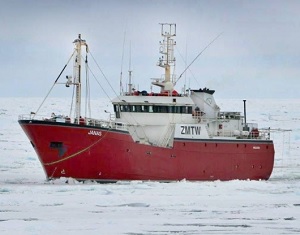
Toothfish research draws scientists, seafarers back for second Antarctic journey
Having broken the ice three years ago, a Nelson-based longliner is making a return voyage to the Antarctic to gain further insights into the world of toothfish. The Talley’s-owned FV Janas sailed last week to the northern Ross Sea region to carry out a winter scientific research survey. This is the second such trip for the Janas, having successfully completed a survey in the Ross Sea in 2016. During that trip, scientists and crew successfully fertilised Antarctic toothfish eggs, measured egg buoyancy of newly fertilised eggs, and collected wild eggs from plankton for the first time in history. >click to read< 14:28
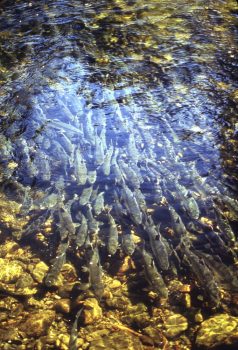
Scientists warn of too many pink salmon in North Pacific
Biological oceanographer Sonia Batten experienced her lightbulb moment on the perils of too many salmon three years ago as she prepared a talk on the most important North Pacific seafood you’ll never see on a plate, zooplankton. Zooplanktons nourish everything from juvenile salmon to seabirds to giant whales. But as Batten examined 15 years of data collected by instruments on container ships near the Aleutian Islands, she noticed a trend: zooplankton was abundant in even-number years and less abundant in odd-number years. Something was stripping a basic building block in the food web every other year. And just one predator fit that profile. >click to read< 15:47
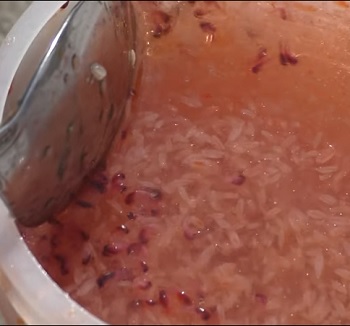
Experts track right whale behavior in new trouble spot
Scientists from the U.S. and Canada have returned from a North Atlantic right whale survey trip in the southern Gulf of St. Lawrence where they found dense reserves of zooplankton that have drawn 70 or more of the critically endangered marine mammals to the region this summer. They now expect the right whales to move farther north in the coming summers to follow the movement of the food they consume,,, Many of the right whales that visit Cape Cod Bay and south of the islands in the late winter and early spring migrate northward as they follow the movement of zooplankton, especially a rice-sized copepod called calanus. >click to read< 09:58

DMF Rescinds Seasonal Large Whale Trap Gear Closure and Seasonal Speed Limit
8:15 PM (6 minutes ago)
May 9, 2019 Marine Fisheries Advisory
The most recent aerial survey by the Provincetown Center for Coastal Studies demonstrate that right whales have migrated out of those state-waters adjacent to Cape Cod. As a result, the Director of the Division of Marine Fisheries has rescinded both the Large Whale Trap Gear Closure Extension and Seasonal Speed Limit Restrictions (Notice of Declaration) effective May 10th. These rules were previously in place through May 14th.
Effective tomorrow, commercial and recreational lobstermen may set their trap gear in those waters north and east of Cape Cod that were previously closed to fixed gear. Additionally, boaters operating vessels that are smaller than 65’ over length may operate at a boat speed of greater than 10 knots. We advise that vessel operators continue to operate with caution. Through May 15th, vessels with an overall length of 65’ and greater shall comply with the federal 10 knot speed limit in the waters of Cape Cod Bay (federal rule).
Right whales are a critically endangered species and their population has been decreasing since 2010 due to continued mortality and low birth rates. These whales seasonally migrate into Massachusetts waters and aggregate in Cape Cod Bay to feed on zooplankton. In recent years, more than 50% of the known right whale population was observed in our waters during late winter and early spring. The Large Whale Trap Gear Closure and Cape Cod Bay Seasonal Speed Restriction protects these endangered whales from entanglements in fixed fishing gear and vessel collisions, which are a major sources of mortality for these endangered animals.
For more information about the management of protected species in Massachusetts, contact DMF at 617-626-1520 or visit our website at www.mass.gov/marinefisheries.
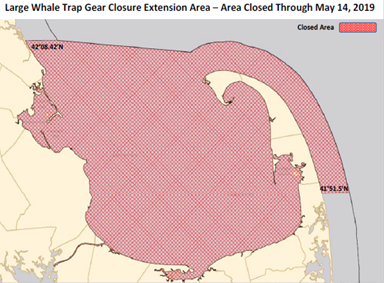
Division of Marine Fisheries – Seasonal Trap Gear Closure Extended Through May 14th
The continued presence of endangered right whales in the waters off Cape Cod results in the Director of the Division of Marine Fisheries extending the seasonal Large Whale Seasonal Trap Gear Closure through May 14, 2019 (Notice of Declaration)> click to read< This closure extension applies only in certain waters within Cape Cod Bay and along the Outer Cape. Calanus plankton counts indicate that the whales are likely to remain aggregated and feeding in the area.,,, This closure does not extend into any federal waters, including those waters north of Cape Cod on Stellwagen Bank. >click to read<16:03









